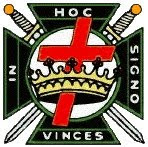
The Democratic Republic of Timor-Leste, otherwise known as East Timor, is located in the eastern half of the island of Timor which lies off the northern coast of Western Australia in the Indonesian archipelago.
It’s a small country of 14,870 km2 , and with a population of 1,134,000.
East Timor is an extremely poor country. The economy is based predominantly on agriculture which employs over 90% of the population.
It is one of only two predominantly Roman Catholic countries in Asia (along with the Philippines). Catholics make around 97 % of the population.
The history of the country dates back to 1520 when it was first colonized by the Portuguese. At this time the Dutch were in control of several of the surrounding islands. By 1613 the Dutch had taken control of the western portion of Timor. The Dutch and Portuguese fought for control over the island until 1860. At this time a treaty was made dividing Timor into eastern and western portions.
The treaty gave the western portion to the Netherlands and the eastern portion to Portugal. Eventually the Netherlands gave up its colonies in the Dutch West Indies including West Timor, giving birth to Indonesia. The Dutch recognized the western part of Timor as Indonesia in 1949.
The Portuguese remained in control of East Timor for 455 years, until 1975. A military coup in Portugal in 1974 increased political activity both in Portugal and Portuguese Timor. In 1975 Portugal pulled out of East Timor, leaving it vulnerable to invasion or conquest. The Timorese Democratic Union demanded independence.
July 16, 1976, nine days after East Timor was declared an independent nation, it was invaded and annexed by Indonesia. In July of 1976 East Timor was declared the 27th province of Indonesia. Indonesia occupied East Timor for the next twenty four years. Indonesian rule in East Timor was marked by extreme violence and brutality. More than 200,000 Timorese reportedly died from famine, disease, and fighting since the country’s annexation . The most cruel of these crimes was the
Santa Cruz Massacre on November 12, 1991, where Indonesian troops fired upon a peaceful memorial procession to a cemetery in Dili, East Timor that had turned into a pro-independence demonstration. More than 271 East Timorese were killed that day at the Santa Cruz cemetery or in hospitals soon after. An equal number were disappeared and are believed dead. Moreover Indonesia tried to change the demographics of the country by bringing Indonesian Muslim settlers.
On August 30, 1999, a UN-supervised popular referendum was held to choose between Special Autonomy within Indonesia and independence. 78.5% of voters chose independence, but violent clashes, instigated primarily by elements within the Indonesian military and aided by Timorese pro-Indonesia militias broke out soon afterwards. A peacekeeping force was sent to restore order.
By the end of October 1999 the last of the Indonesian soldiers had left East Timor. For the next three years East Timor was governed by the United Nations Transitional Authority in East Timor.
East Timor declared itself a nation on May 20, 2002. Mari Alkatiri, a former guerrilla leader was elected Prime Minister and former rebel leader, José Alezandre Gusmão, was elected president.
Human Rights Organizations claim that 200,000 of the 650,000 Timorese people were killed during the annexation by the Indonesian forces. The Indonesian occupation and invasion of East Timor is one of the worst atrocities of the twenty first century.
More info :
Conflict in East TimorSanta Cruz Massacre East Timor














.jpg)
.jpg)



